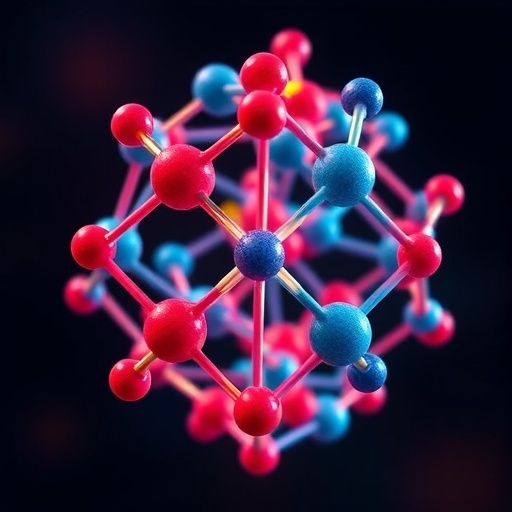
In the rapidly evolving landscape of molecular property prediction, significant advancements continue to emerge, enhancing our understanding of how molecular characteristics can be accurately assessed and predicted. Recent work by Ma, Pu, and Shao introduces an innovative approach encapsulated in a framework termed Molecular-SGGI. This pioneering system combines attention-guided mechanisms with a robust multi-representation learning architecture, reflecting a strategic shift in predictive modeling that could revolutionize the field. The integration of adaptive fusion techniques within this framework further signifies a leap in computational methodologies aimed at decoding complex molecular behaviors.
At the core of the Molecular-SGGI framework lies attention-guided learning, a technique borrowed from the domain of deep learning that emphasizes the most relevant features within a dataset. This is crucial in molecular property prediction, where the sheer volume and complexity of molecular data can overwhelm traditional analytical methods. By employing attention mechanisms, the framework can dynamically prioritize essential molecular features while filtering out irrelevant noise, thus refining the predictive accuracy of the model. This selective focus enhances model interpretability, which is often a significant hurdle in machine learning applications.
The multi-representation aspect of Molecular-SGGI provides an additional layer of sophistication. In molecular modeling, different types of representations—such as graph-based, three-dimensional structures, and molecular fingerprints—are often utilized to analyze properties from varying perspectives. By integrating multiple representations, this framework elevates the predictive capabilities and allows for a more holistic view of molecular behaviors. This comprehensive approach is vital for addressing the multifaceted nature of chemical compounds and their interactions.
The researchers employed sophisticated learning algorithms to train the framework, allowing it to discern intricate patterns across diverse molecular datasets. These algorithms can effectively map out the relationships and correlations between different molecular features, ultimately leading to more accurate predictions of molecular properties. Such advances have implications that extend beyond basic research, potentially impacting drug discovery, materials science, and environmental safety assessments.
Moreover, the adaptive fusion mechanism stands out as a groundbreaking element of this framework. It enables the model to iteratively adjust and optimize the fusion weights applied to different molecular representations. This adaptability ensures that the model evolves as new data becomes available, maintaining its relevance and accuracy in predictive tasks. The ability to refine predictions in real-time is a game-changer in research and industrial applications, where timely and precise molecular predictions can significantly accelerate research timelines.
In implementation, the framework was rigorously tested against existing state-of-the-art models. The results indicated that Molecular-SGGI not only matched but often exceeded the performance of prevailing methodologies in forecast accuracy. This robustness was particularly evident in the modeling of complex molecular systems and the prediction of properties that are notoriously difficult to estimate. Such validation illustrates the framework’s practical applicability and its potential adoption in commercial environments.
Furthermore, the authors highlighted the importance of benchmarking the framework against diverse datasets. Their extensive evaluation included various molecular properties and types, showcasing the framework’s versatility and robustness across different chemical domains. This broad applicability is particularly significant for researchers seeking a reliable tool to facilitate their explorations in molecular chemistry.
In essence, the emergence of Molecular-SGGI offers a new lens through which scientists can study molecular properties. It represents a paradigm shift toward more advanced computational techniques that embrace the complexity of molecular data rather than oversimplifying it. The attention-guided features, combined with multi-representation learning and adaptive fusion capabilities, equip researchers with a powerful toolkit for tackling some of the most challenging problems in molecular prediction.
As researchers continue to grapple with the challenges of molecular property prediction, the insights gained from this work will likely influence subsequent investigations and methodologies. By paving the way for innovative approaches, Molecular-SGGI serves as a testament to the critical role of advanced computational frameworks in scientific progress.
The implications of this research extend well beyond theoretical inquiries. The advancements made possible by the Molecular-SGGI framework may catalyze breakthroughs in materials that are resilient and responsive to environmental stimuli, molecular compounds that serve as effective pharmaceuticals, and sustainable chemical processes that minimize ecological footprints.
Looking ahead, the potential for real-world applications is immense, especially within industries that rely heavily on molecular predictions. If adopted widely, such innovative frameworks could streamline workflows, reduce costs, and enhance the precision of molecular experimentation. Moreover, they could facilitate collaborations across disciplines, marrying computational sciences with organic chemistry, materials science, and bioengineering.
In conclusion, the work of Ma, Pu, and Shao underlines the profound impact that adaptive, attention-guided, multi-representation learning can have on molecular property prediction. As we step into a future where the intersection of advanced computing and molecular sciences becomes increasingly pronounced, frameworks like Molecular-SGGI will undoubtedly play a pivotal role in shaping the frontier of chemical exploration and innovation.
Subject of Research: Molecular property prediction using multi-representation learning and adaptive fusion techniques.
Article Title: Mol-SGGI: an attention-guided comprehensive molecular multi-representation learning and adaptive fusion framework for molecular property prediction.
Article References: Ma, L., Pu, C., Shao, D. et al. Mol-SGGI: an attention-guided comprehensive molecular multi-representation learning and adaptive fusion framework for molecular property prediction. Mol Divers (2025). https://doi.org/10.1007/s11030-025-11294-4
Image Credits: AI Generated
DOI: 10.1007/s11030-025-11294-4
Keywords: Molecular property prediction, multi-representation learning, attention-guided framework, adaptive fusion, deep learning.
Tags: adaptive fusion techniques in modelingadvanced computational methodologiesattention-guided learning in deep learningdecoding complex molecular behaviorsenhancing predictive accuracy in chemistryinnovative frameworks for molecular analysisinterpretability in machine learning modelsmolecular property predictionmulti-representation learning architecturerevolutionary advancements in molecular sciencestrategic shifts in predictive modeling




